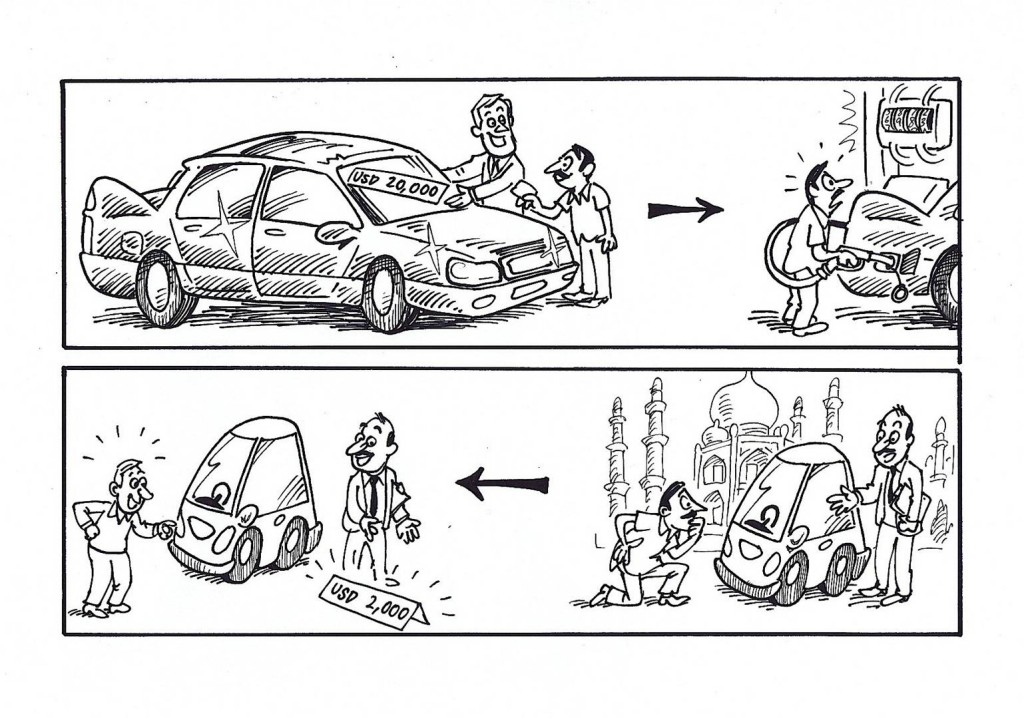Top 10 management models for your business: #3 Reverse innovation
2 July 2014 by Infinite Ideas in 100+ Management Models, Business and finance
by Fons Trompenaars and Piet Hein Coebergh, co-authors of 100+ Management Models.

Problem Statement
How can reverse innovation create growth?
Essence
Vijay Govindarajan claims that the need and eagerness in emerging markets for sustainable growth creates an environment for innovation that is superior to the environment in more affluent countries. Govindarajan observes the following evolution: from globalization (richer countries that export what they use themselves) came glocalization (adaption to local needs on a global scale), followed by local innovation (emerging markets increasingly innovate themselves) which is making way for reverse innovation (emerging markets dominate innovation).
Reverse innovation is also called trickle-up innovation or frugal innovation. Govindarajan’s approach builds on Christensen’s theory of how innovation can be disruptive and C.K. Prahalad’s notion that there is a fortune to be made at the bottom of the social pyramid. Govindarajan served as the first professor-in-residence and chief innovation consultant at General Electric, some of the stories that illustrate reverse innovation were developed there, and supported by CEO Jeff Immelt.
How to use the model:
Govindarajan and Trimble’s Reverse Innovation Playbook (2012), covers nine rules ‘that will guide your innovation efforts’, in three categories, that can be summarized as follows:
- Strategy: To grow in emerging markets, innovate, not simply export; grow from innovations in emerging market to other emerging markets; beware of small but fast growing companies in emerging markets.
- Global organization: Move resources to where growth is; create a reverse innovation mindset; focus in these markets on growth metrics.
- Project organization: Stimulate an entrepreneurial ‘start-up’ spirit; leverage resources through partnerships; resolve critical unknowns quickly and inexpensively.
In addition, the Reverse Innovation Toolkit (2012) provides several practical diagnostics and templates to move reverse innovation forward in a company.
Results
Working with the Reverse Innovation Playbook and the Reverse Innovation Toolkit helps creative thinking about unconventional ways to innovate and grow. Evidence that supports this reverse-thinking model is mainly based on how multinational companies operate.
Comments
Like C.K. Prahalad’s theory of how a fortune can be made at the bottom of the pyramid, Govindarajan’s model has received criticism that the theory is not very specific in its approach and that there are only a few showcase examples, in a couple of big companies, to prove the concept, mainly from India and China. In addition, it is not completely unheard of for innovations from emerging markets to become successful, even in richer countries. That does not reduce the challenge that remains for rich countries of finding new ways to grow; in any scenario, this will increasingly be done with the emerging economies. Govindarajan presents a roadmap that at least has the power to take a radically different look at how most (Western) countries do business.
Literature
Govindarajan, V., Trimble, C. (2012) Reverse Innovation: Create Far from Home, Win Everywhere, Boston, Harvard Business Press.
Immelt, J.R., Govindarajan, V., Trimble, C. (2009) How GE is disrupting itself, Harvard Business Review, 87.10, pp. 56–65.
Mahbubani, K. (2013) The Great Convergence: Asia, the West, and the Logic of One World, New York, Perseus.

